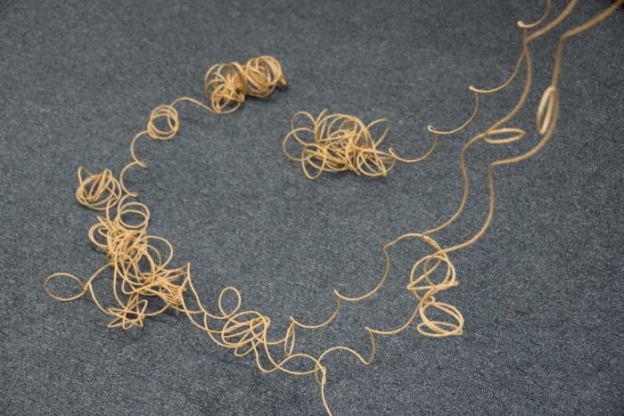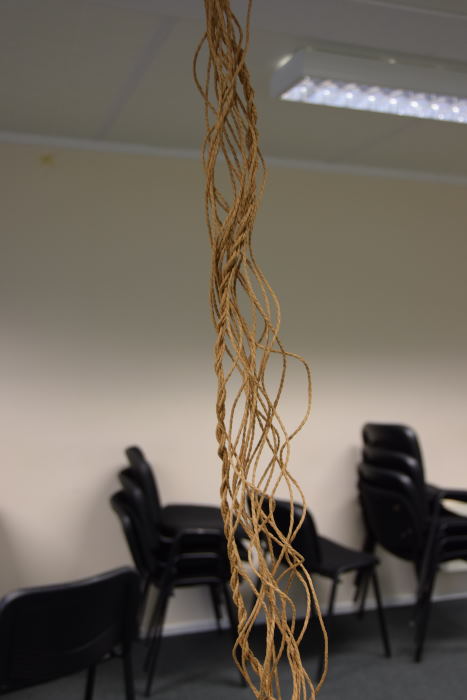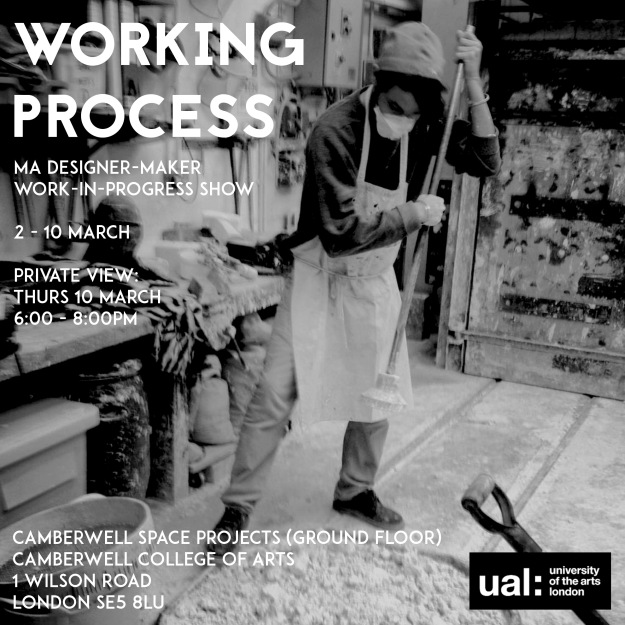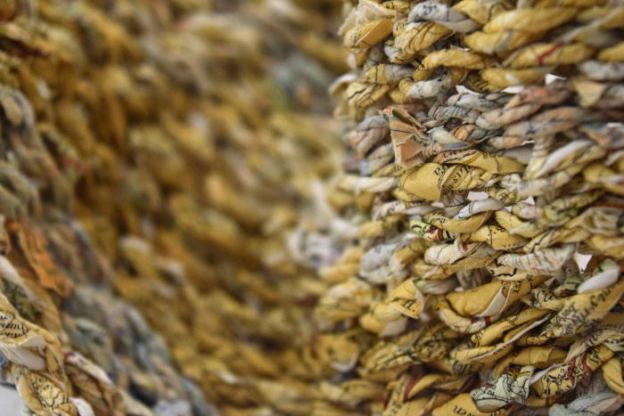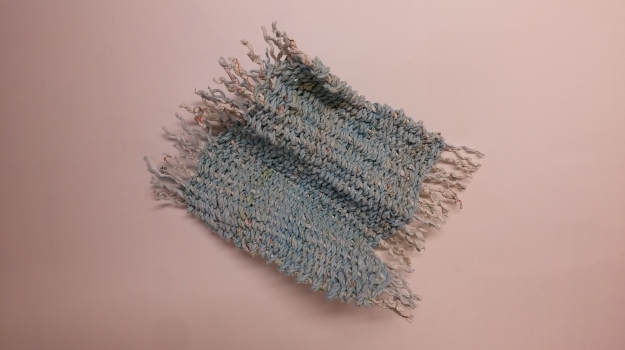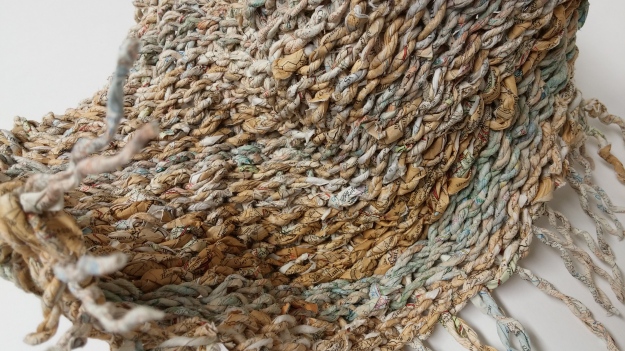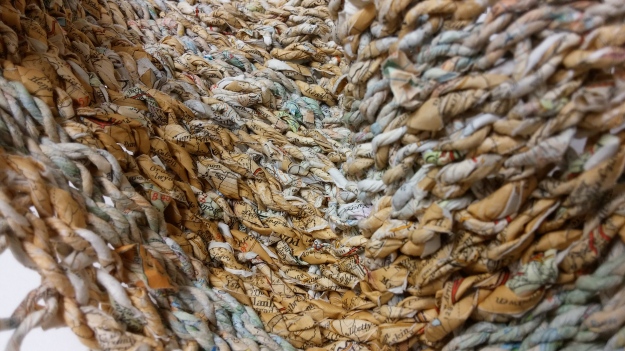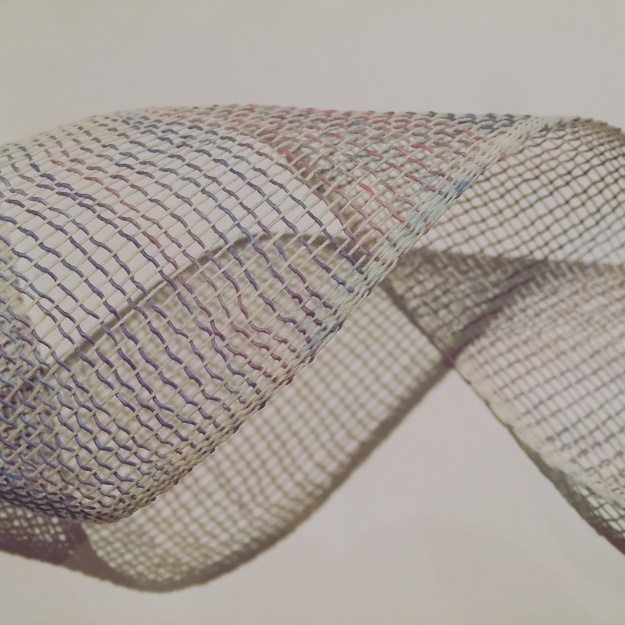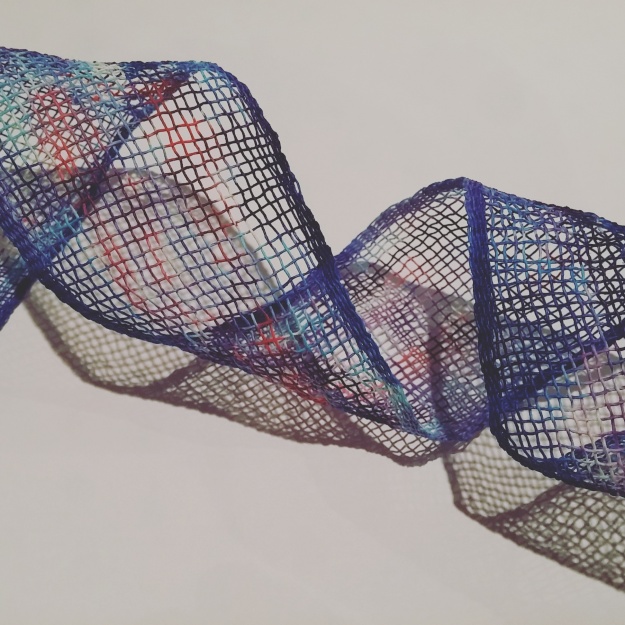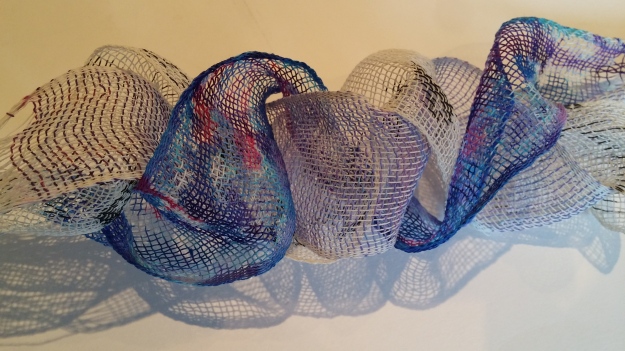Catching up on new making and a couple of days of tutorial ups and downs…
After doing the colour experiments a couple of weeks ago, I wanted to try doing a bigger piece which would show me what a larger piece of the paper weave would look like. So, last week I made a piece which incorporated the narrative materially into the weave; I based it on the idea of ‘origins’, and used of-place materials which spoke of one aspect of my place identity. Although this sounded like I knew what would come from it, looking back now it was clearly an early-stage, slightly unplanned experiment. Looking at the finished piece, there is something in it…but it’s a long way from being anything resolved. And perhaps not a final show worthy idea after all.
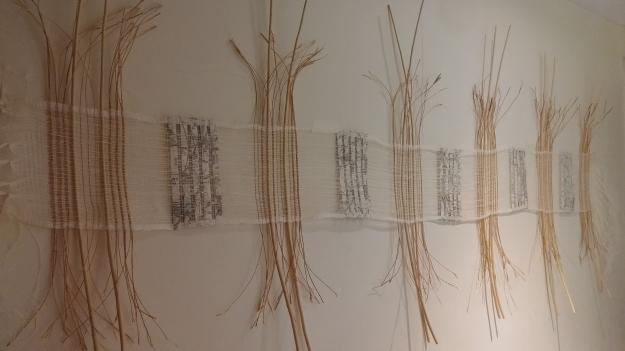

After making this piece I tried to figure out what I didn’t like about it. More than anything else my choice of materials is perhaps the biggest question: paper, map, wheat and white willow. I know I wanted “English” materials, but this set doesn’t really fit together very well. Let’s not even discuss the fact that the paper is actually Japanese. My favourite pieces have all been ones which have had a single material propagated throughout, and this is a long way from that. Still, I thought there was something interesting in it….but I’m no longer sure quite what that was.
I had a catch-up with Maiko yesterday and unsurprisingly, she didn’t like it, and seemed unnervingly happy that I wasn’t pleased with it also. In fact, Maiko didn’t really think there was anything in any of the paper weaving samples I’ve done. Perhaps I see alone see something lovely in the coloured weft weave in particular, but that isn’t related to my current project. Something to file in the new ideas book I think?
So what next? Well, before I went in for my tutorial I imagined a mini-Maiko on my shoulder asking “Why? Why?” and went back to my project objectives:
I am investigating the concept of self by examining the subjective reality we construct as we experience the world. By unravelling our sense of self as strands of multiple co-exisiting identities, I am looking at how these strands are built from places which become part of us through our lives. Shadows of real and imagined places embed themselves into the self, an interconnection of experience, memory and fiction. These shadows haunt us as we pass through the spaces of the world, generates belonging, displacement, familiarity or isolation. My project is based upon the process of weaving, as it echoes my ideas of universality and locality: a single cloth constructed from countless individual strands. Within the fibres, I am seeking an expression of the complexity of our existence. Fragments of past, present and future co-existing for a fleeting moment, never to reform.
And this brought me back to the idea of using map weave and the ideas around the heterotopia – in Richard Long’s words where the sculpture and the place are one and the same. I was quite enjoying the deconstruction and reconstruction of the map back over the holidays (and the echo in constructing and deconstructing the sense of self). Time to revisit the map mini-project!
This was my new test piece done using plain 2-ply paper in place of the more time-consuming handmade map yarn:

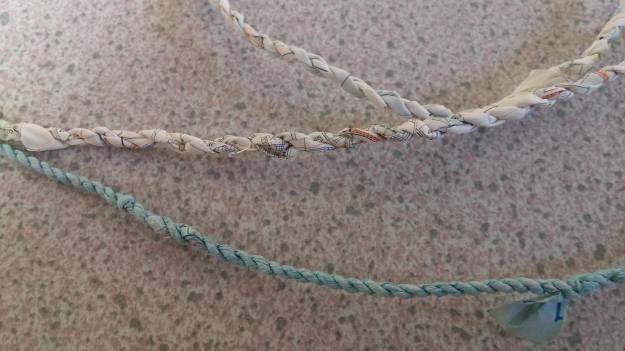
I really liked the vibrancy of structure in this piece and could envisage a really large, topological (topographical?) low relief sculpture made completely of maps. Something echoing the ups and downs of the evolution of one’s own sense of self across a lifetime?
When I showed Maiko these she went straight for the thread made of north sea blue, and seemed fascinated by this as an object in its own right. Unlike the restricted loom weaving, there is a lot of potential in this idea and we had a lively chat about some things to consider. Maiko suggested I had come full circle, arriving back where I started the course process-wise but with a different idea of making and the development of my ideas. [I certainly hope I have moved on after all this time and effort!??] I definitely had no clue about materiality and the agency of object (and process itself) when I started. I think this idea, although not yet fully resolved, can contain all the lessons I have learnt about making over my time at Camberwell.
Today, I followed up this chat with a tutorial with Susan J from the Book Arts course. We last met last June before the interim show – so much has come on since then! Really great chat and lots more ideas to think about. Nicely different yet complementary to the comments from Maiko. Importantly she reiterated that there is still time to experiment. I can a have a “plan for the show” right now without needing to know exactly to the mm what the final object will look like. She said not to pin everything down too early, there is still time!
So a summary of my reflection from both discussions:
- Colour will be a key factor to manipulate in the final object…
- …as will tension – does the tension in the weaving echo tension in the landscape / geological or identity crisis?
- Investigate the relationship of the grid as the basis of weaving and the grid as the basis of mapping
- The form of the final object need not adhere to the grid, subversive weaving? Be wary of not making it look like a ‘basket’ though
- It also doesn’t need to be a really big piece which contains every concept in one – I can focus it down, specific ideas to specific pieces, and show a series of works
- Since I’m obsessed with words and this is conceptual art, use the labels to add extra layers of meaning to the work. I can make the display of the final pieces work to my advantage here – labels, libraries, context etc.
- The weaving is a condensation of all of the information of the map into a new object, and this is quite a powerful image I can play with (e.g. this one piece of textile is made from 10 individual 1:25000 O/S maps etc). This is not only true spatially but temporally as well.
- The map is normally a folded object so what am I saying by showing it in a non-folded form?
- Do I want my pieces to be touchable, will you be able turn them over? OR do I want people to see the underneath but not be able to feel it?
- on this point, a map it a two-sided object. The back either has a new map, a blank space or an index/legend of some kind. How will I make use of this or acknowledge this in the work?
- Remember eggs and baskets!







